The Calligraphic Art of
Ishikawa Kyuyoh
June 8 (Sat) to July 28 (Sun), 2024
The Ueno Royal Museum, Tokyo
Executive Committee of Complete Works of Ishikawa Kyuyoh
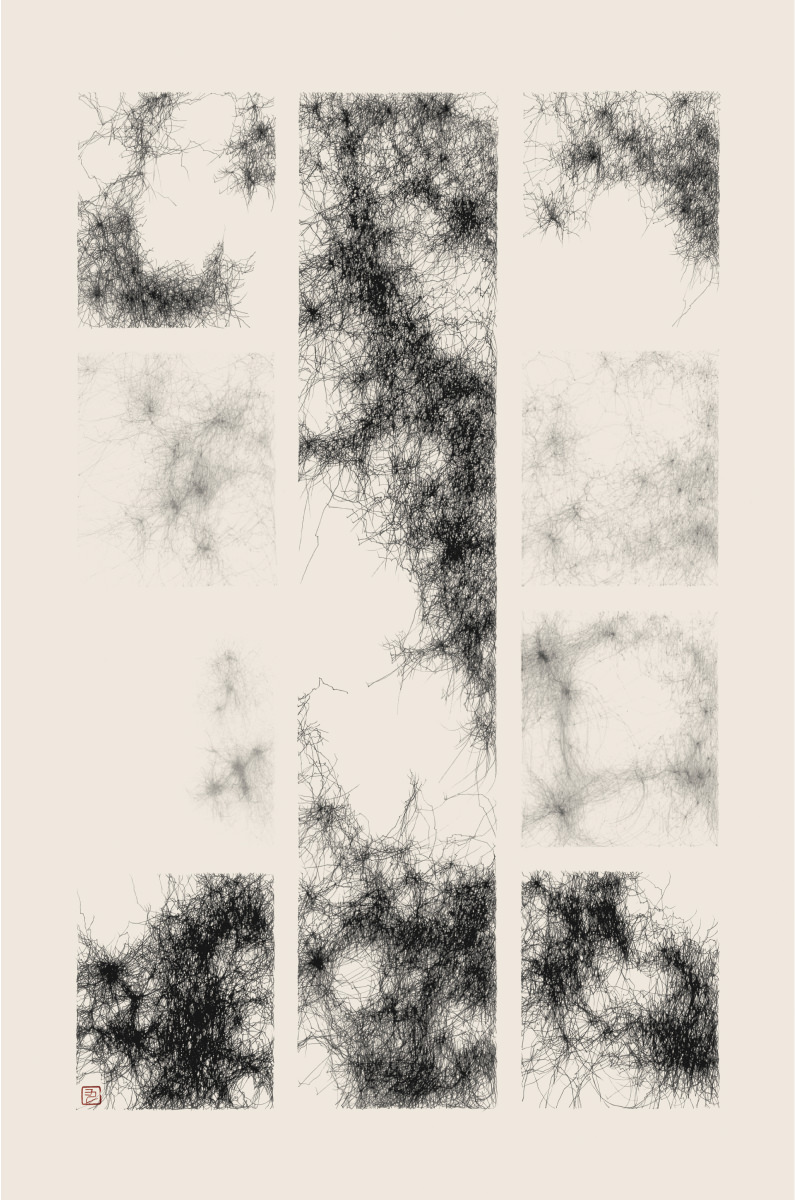

“Ishikawa Kyuyoh Taizen,” or “The Complete Works of Kyuyoh Ishikawa” is a two-part exhibition that reveals the full scope of the artist’s creative process, a body of calligraphy that reflects the times he has lived in. This large-scale exhibition questions the act of “writing,” both currently and in the future. In order to present the entire body of his work the exhibition will be divided into two separate parts, one month each. The “Classics” section, held in June, will feature works based on literary classics such as “The Tale of Genji,” “Essays in Idleness,” as well as “Sakazuki Senji Mon,” a 1,000 Chinese characters poem written on 1,000 sake cups. The “Situational” section, held in July, will feature works which are based on contemporary texts, including his own writings. His works deserve to be appreciated in person for their sheer intensity, such as the overwhelming power of the 85 meter long paper roll of Japanese translations of Bible verses.
Inquiries:
H. Kobori, Y. Katoh, Executive Committee of Complete Works of Ishikawa Kyuyoh
contact@ishikawakyuyoh-taizen.com
Information
Complete Works of Ishikawa Kyuyoh
- First Part “Classic”
- June 8 (Sat) to June 30 (Sun), 2024
- Second Part “Situational”
- July 3 (Wed) to July 28 (Sun), 2024
*Closed July 1 (Mon) to 2 (Tue) - Venue
- The Ueno Royal Museum
1-2, Ueno Park, Taito-ku, Tokyo 110-0007 - Time
- 10:00 to 17:00 (Last Entry: 16:30)
* Advance tickets can be purchased online at the official ticketing website ART PASS
* Exhibition site (in Japanese)
This “Complete Works of Ishikawa Kyuyoh” exhibition presents a rare opportunity to experience the breadth and depth of this master calligrapher. Born in Fukui Prefecture, in 1945, he started calligraphy at age 5. As soon as he entered Kyoto University, he became a force to be reckoned with. All of his works in this two part exhibition are his brush-written interpretations of texts: poetry, novels and essays. The first “Classic” part consists of works in which the source texts are classical literature, such as “The Tale of Genji” and “Essays in Idleness.” In the “Situational“ second part, source materials are contemporary writings. These include some of his own essays about current events, such as 9.11 and the Russo-Ukrainian War. He exists in a rarefied sphere, between the highest levels of conventional calligraphy and modern art. He has famously said that calligraphy is not about writing simple characters, but calligraphy is expressing the meaning of words. As abstract as his work might look, they are all constructed with words. On first impression, the works might feel chaotic, but they are imbued with a masterful sense of precision and razor sharp intent. He is an artist whose work deserves to be appreciated in person for their sheer intensity. For example, the overwhelming power of “Eli, Eli, Lema Sabachthani?,” expanding over 85 meters in length. This exhibition features not only an extensive collection of his well known works, but some that have never been shown before. As the artworks will be completely different between the two parts of the show, it is worth two trips to appreciate his importance.
Explanation of Works
First Part “Classic”
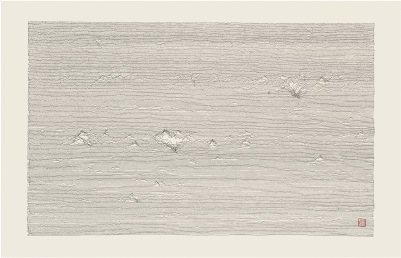
55 Chapters of The Tale of Genji, Wakana Jo (2008, 59 × 94cm)
Genji Monogatari, Wakana Jo
To the Tale of Genji 54 chapters, one called Kumogakure, only a title with no text, was added, making it the Tale of Genji 55 chapters. Wakana Jo is the one of the 55.
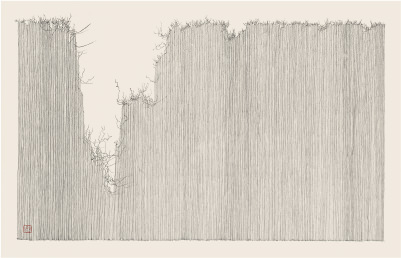
55 Chapters of The Tale of Genji, Shii ga Moto (2008, 59 × 94cm)
Genji Monogatari, Shii ga Moto
This is one of the works in this series, The Tale of Genji, 55 chapters. It pushes the boundaries of calligraphy itself.
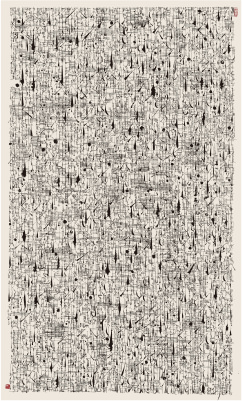
Tannisho No. 18 (1988, 92 × 57cm)
Tannisho No. 18
This work contains the full text of Shinran’s “Tannisho.” It took eight months to complete.
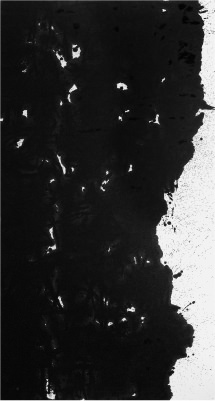
A Lihe Poem from a Series of Five (1992, 360 × 192cm)
Riga Shi, Kanpu Goshu (Gorensaku)
One of a series of five poems written by the Tang Dynasty genius Lihe.
Second Part “Situational”
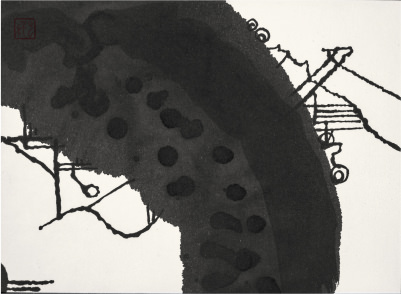
Zabon ni Ha o Ateru Ha o Iruru (2022, 24 × 34cm)
Zabon ni Ha o Ateru Ha o Iruru
A poem selected from 109 haiku by Hekigoto Kawahigashi, a forgotten revolutionary of modern haiku.
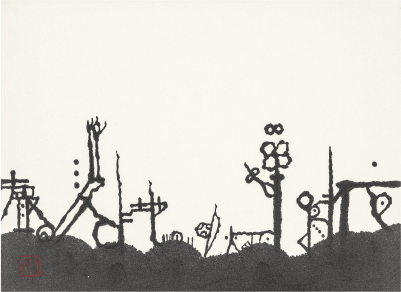
Yoru mo Naku Semi no Hi Akari no Chi ni Otsuru Koe (2022, 24 × 34cm)
Yoru mo Naku Semi no Hi Akari no Chi ni Otsuru Koe
A poem selected from 109 haiku by Hekigoto Kawahigashi, a forgotten revolutionary of modern haiku.

Eloi, Eloi, lama sabachthani? (1972, 270 × 341cm)
Eloi, Eloi, lama sabachthani?
From the Bible, Psalms 22 verses translated into Japanese.
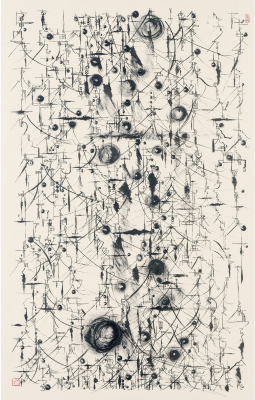
In the midst of the war in Europe, Regarding the Primitiveness of Humanity (2023, 95 × 60cm)
Yoroppa no Senso no Sanaka ni-Jinrui no Mijuku ni Tsuite
One of his latest works, it is about the war in Russo-Ukrainian War, and asks the question, “Why don’t wars ever stop?”
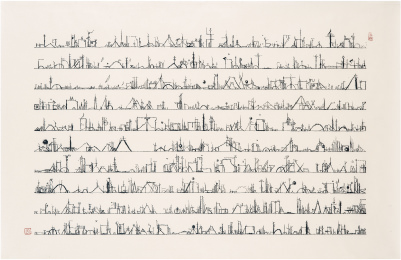
Restoring a Society of All Faces (2022, 60 × 95cm)
Zengao Shakai no Kaifuku o Negatte
Original poetry written during the coronavirus epidemic hoping for the restoration of the society of all faces.
Coming Events
Catalog Raisonné “Complete Works of Ishikawa Kyuyoh”
A catalog raisonné (in Japanese, English, and Chinese) of all 2,200 works by Kyuyo Ishikawa is being produced that will be published by SHIBUNKAKU Co., Ltd in summer 2024.
“Calligraphy is Music” Demonstration Concert
As a project to demonstrate his theory that “calligraphy is music,” The program will analyze “Tannisho No. 18,” a work that includes the entire text of Shinran’s “Tannisho”. These scores were written by analyzing three parameters of the “taction” or rush strokes: speed, vector, and depth, used in writing the text. The scores are performed as electronic music and as a string quartet. Kyuyo Ishikawa will give a lecture about this project. The venue is the Sogakudo of the Former Tokyo Music School, a retrospective concert hall in Taito Ward. For more details, 音楽会 - 書譜楽「歎異抄No.18♪いはんや悪人をや♪」
Exhibition of Kyuyoh Ishikawa “The Tale of Genji” and Classical Japanese Literature
- Time
- October 5 (Sat) to November 17 (Sun), 2024
- Venue
- Tokushima Prefectural Museum of Literature and Calligraphy
Links
Organizers
Executive Committee of ISHIKAWA KYUYOH TAIZEN, Nihon Keizai Shimbun, The Ueno Royal Museum
Supported by
SHIBUNKAKU Co., Ltd., Suntory Holdings Limited, HAKKAISAN BREWERY CO., LTD., Sanyo Chemical Industries, Ltd., Kenji Kasahara (Founder, MIXI Inc.), Graphic, Corporation,SCREEN Graphic Solutions, Morisawa Inc., Kinki Danboru, Koichiro Yoshida (Cloudworks, Inc.), Sun-M Color Co., Ltd., Otsuka Ohmi Ceramics Co., Ltd., Kyoto Seika University
Cooperation
Hobonichi Co., Ltd., TAKEO Co., Ltd., Minerva Shobo, Sayusha Ichinokura Sakazuki Art Museum, Institute for the Study of Character Civilization
ISHIKAWA KYUYOH Profile
Calligrapher. Born in Fukui Prefecture in 1945. Graduated from Kyoto University, Faculty of Law. After serving as a professor at Kyoto Seika University and director of the Institute for the Study of the Literary Civilization, he is currently a professor emeritus at the same university. He has analyzed the structure and history of calligraphy. He is also active as a critic, and his theories on the Japanese language and culture have had a great influence on various fields. He continues to be at the forefront of expression and discussion in both producing his artwork and publishing his writings. He has produced more than 2,000 works and published more than 100 books. He has received numerous awards.